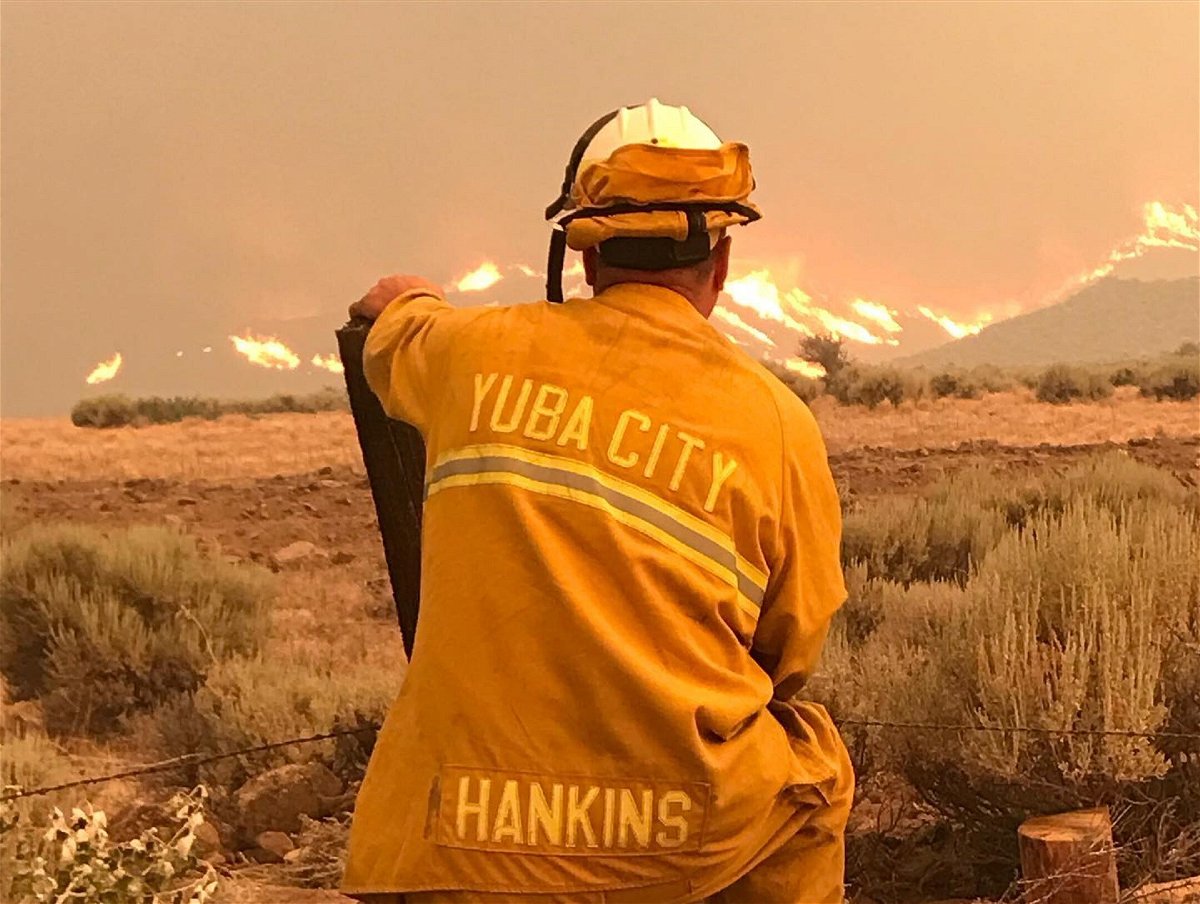Passengers trapped inside submerged subway as China battles deadly floods

Yuba City Fire Department OES 407 takes in the view while on the Beckwourth complex Fire.
By Jennifer Gray and Allison Chinchar, CNN Meteorologists
Firefighters in the West have witnessed loss beyond measure and are yet again gearing up for another devastating fire season, especially in California.
Jesse Alexander, the chief for the Yuba City Fire Department in California, and his crew have been on the front lines of some of the most destructive California wildfires in history, including the Camp Fire in 2018, which killed 85 people and devastated the town of Paradise. And he says now the fire is really hitting close to home.
“During the Camp Fire, I looked across at guys who live in Paradise, not knowing if their house is there,” said Alexander. “It’s completely different when you are fighting a fire in your own community. We are used to seeing destruction, but when it’s in your own backyard, it makes such a significant impact.”
So far this year, California has seen three times the acres burned compared to last year’s record-breaking fire season. California is currently in its 11th driest year on record, and has already broken over 1,500 daily high temperature records this year — 17 of those were all-time high temperatures. Eleven of the last 15 most destructive fires in California history occurred in the last five years.
Last week, Alexander’s department was split between fighting the Dixie Fire and the Tamarack Fire.
The blaze has now reached “megafire” status as it has burned over 160,000 acres. It’s burning the same region that the Chips Fire scorched in 2012.
Alexander said he sees that climate change is having an impact on the way wildfires behave, and he’s concerned about the safety of his crew.
“Conditions are definitely changing. You are seeing these erratic fire events happen more frequently,” he said.
“It’s one thing to be smart and savvy with your fire behavior analysis,” said Alexander, “but when you get a firenado, there’s not a whole lot you can do to keep yourself safe and that always makes me nervous.”
Seen from space
Extraordinary plumes of wildfire smoke are billowing out of these massive complexes, reaching so far up into the atmosphere that they are being carried thousands of miles east by high-level winds.
There were few clouds in the Northeast on Tuesday morning, but the smoke — carried on a 3,000-mile trip across the country — created a hazy start to the day.
In some areas, the smoke has reached the ground level, where it can be a health concern. Air quality alerts have been issued hundreds of miles from the flames, as far east as Pennsylvania and New York.
The smoke at high levels of the atmosphere is visible in several ways. Its effect on light causes the sun to look red at sunset as the sky takes on a burnt-orange color. A similar effect can be seen in the morning as the sun rises.
How clear is the air where you live?
The drought gets worse
Despite some much-needed rainfall last week, the drought expanded in the West and now covers more than 95% of the region.
More than two-thirds of the West in extreme or exceptional drought — the two worst categories. This area has expanded by 60,000 square miles, or about the size of the state of Georgia, during the month of July.
In particular, conditions deteriorated in the Pacific Northwest where there was significant expansion of the worst drought categories. Washington state had previously been spared the worst category of drought until last week when it exploded to cover more than a quarter of the state. The drought is the worst on record for Oregon, with 17% in the most severe category, an area that has nearly quadrupled in the month of July.
Six states are still entirely in drought conditions: Oregon, Idaho, California, Nevada, Utah and North Dakota.
Robust rains the past few days, courtesy of the Southwest Monsoon, have brought some improvement in the Southwest, particularly in parts of Arizona, New Mexico and southwestern Colorado. How much improvement the recent rain will be for the drought is yet to be seen.
409,611
The number of acres burned by the Bootleg fire in Oregon.
On July 19th, the Log and Bootleg Fires merged together forming the third largest fire in Oregon history. The blaze has grown so big and it is producing so much heat that is has essentially created its own weather. This fire is also burning up carbon offsets and is up to 53% contained.
A total of 85 other large fires are currently burning across 12 states today.
China floods kill dozens
At least 33 people are dead and several more are still missing in central China, after devastating floods triggered landslides, overwhelmed dams and rivers, and submerged entire neighborhoods.
Residents of the city of Zhengzhou saw 18 inches (457 mm) of rain fall in just 24 hours. According to the Zhengzhou Meteorological Department, the city recorded over 24 inches (617 mm) of rain in the course of three days, which is just under a year’s worth of rainfall — 25.2 inches (640.8 mm).
Flooding during the summer months in this region of China is an annual occurrence. However, the record-breaking rainfall has raised questions about whether the country is prepared to deal with more extreme weather events that can be amplified by climate change.
The-CNN-Wire
™ & © 2021 Cable News Network, Inc., a WarnerMedia Company. All rights reserved.
CNN’s Hannah Gard, Haley Brink and Monica Garrett contributed to this story.